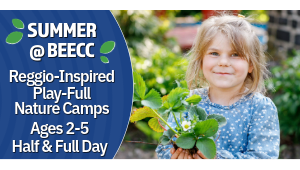By Dr. Erin Kardel, NeuroScience
With the constant barrage of thoughts, feelings, and sensations we experience every day, it’s easy to feel overwhelmed and reactive. It’s often hard to simply notice and observe our mind’s activities without getting emotionally triggered by particular thoughts or feelings. Mindfulness is a tool that helps us pay attention differently, allowing better control over our responses to various states. It provides a break from the busy activity of the mind.
So, what is mindfulness? According to Jon Kabat-Zinn, responsible for developing Mindfulness-Based Stress Reduction (MBSR), mindfulness means paying attention on purpose, in the present moment, non-judgmentally. It’s the ability to observe what’s happening in our minds without getting carried away. This skill helps us step back, gain awareness, acquire perspective, and avoid engaging in negative thought patterns.
Moreover, mindfulness involves focusing attention and awareness on the present moment. This practice prevents absorption by the past or future, helping individuals stay grounded in the now. Whether teaching yourself or your child mindfulness, the goal is developing an awareness of both inner and outer experiences. Various researchers have highlighted the diverse positive benefits of incorporating mindfulness into daily routines.
Brain imaging studies confirm that daily mindfulness practice can alter brain structure and function. Mindfulness triggers positive neuroplastic changes, showcasing the incredible adaptability of our brains. Practicing mindfulness contributes to improvements in mental clarity, self-regulation, mood, well-being, concentration, sleep, and more. These results underscore the profound impact of where we place our attention and thoughts.
Mindfulness can be practiced in numerous ways, including formal practices like scheduled meditation, yoga, or breathing exercises. Informal practices involve mindful engagement in daily activities like driving, eating, and walking. The aim is to slow down, pause, and observe your surroundings periodically throughout the day, using your senses to anchor and ground you in the present.
For example, while walking, pay attention to your surroundings, noticing the birds or the trees swaying. During meals, observe the smell or texture of your food. These simple actions can help enhance mindfulness, grounding individuals in the moment and heightening awareness.
Meditation serves as an effective mindfulness practice. In breathing meditation, focus on your breath as an anchor to the present. If your mind wanders, gently bring your focus back to your breathing. Children can practice ‘belly breathing,’ lying down and observing the rise and fall of their stomachs as they breathe. Although relaxation may occur, the primary goal is to maintain alertness, presence, and mindfulness of emotions, even those uncomfortable or unwanted.
Technology aids mindfulness practice with various smartphone apps and programs designed for all ages. Regular practice and integration into daily life enhance the benefits of mindfulness. Establishing a specific time for practice helps in making it a habit. Despite the known benefits, hectic lifestyles often hinder mindfulness practice. Even in a busy schedule, starting small and gradually increasing mindfulness practice can foster significant positive changes in health and behavior.
Remember, mindfulness is not a cure-all, but a tool for enhancing emotional, physical, and mental well-being. It enables a different response to unhelpful thoughts and feelings, promoting groundedness and presence in the now. Despite the challenges, taking time to practice mindfulness can lead to substantial benefits. Today, take a moment to check in with yourself and observe what you notice.











